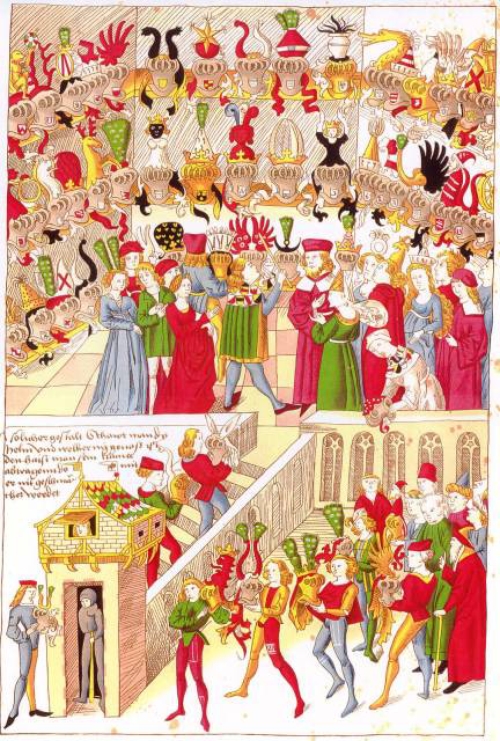
 |
| FIG. 12.--Helmschau or Helmet-Show. (From Konrad Grünenberg's Wappencodex zu München.) End of fifteenth century. |
*1 "Norreys and Surreis, that service aught the kyng,
With horse and harneis at Carlele, made samning."
See Langtoft's Chronicle treating of the Wars of Edward I. against the Scots.
"Bot Sir John de Waleis taken was, in a pleyne,
Throgh Spring of Norreis men that were certeyn."
Ibid., Australes se Norensibus opposuerunt. M. Oaris, under the year 1237.
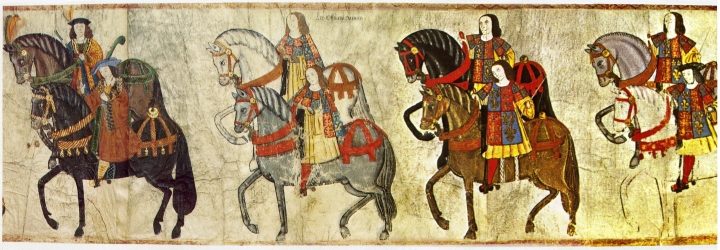 |
| FIG. 13.--Officers of Arms as represented in the famous Tournament Roll of Henry VIII., now preserved in the College of Arms. |

 writes: "At one period the Lyon was solemnly crowned at his inauguration, and vested with his tabard and baton of office." The ceremony was a very elaborate one, and is fully described by Sir James Balfour in a MS., now in the Advocates' Library. There is also an account of the coronation of Sir Alexander Durham, when Laurie, the minister of the Tron Kirk, preached from the text, "What shall be done to the man whom the king delighteth to honour?" The crown was of gold, and exactly
similar to the Imperial crown of Scotland, save that it had no jewels. Now the Lyon's crown is the same as the English King of Arms. The crown is only worn at Royal coronations. At that of Charles I. at Edinburgh in 1633, the Lyon carried thevessel containing the sacred oil. In addition to his strictly armorial appointment, the Lyon is also a King of Arms of the Most Ancient and Most Noble Order of the Thistle.
writes: "At one period the Lyon was solemnly crowned at his inauguration, and vested with his tabard and baton of office." The ceremony was a very elaborate one, and is fully described by Sir James Balfour in a MS., now in the Advocates' Library. There is also an account of the coronation of Sir Alexander Durham, when Laurie, the minister of the Tron Kirk, preached from the text, "What shall be done to the man whom the king delighteth to honour?" The crown was of gold, and exactly
similar to the Imperial crown of Scotland, save that it had no jewels. Now the Lyon's crown is the same as the English King of Arms. The crown is only worn at Royal coronations. At that of Charles I. at Edinburgh in 1633, the Lyon carried thevessel containing the sacred oil. In addition to his strictly armorial appointment, the Lyon is also a King of Arms of the Most Ancient and Most Noble Order of the Thistle.*1 Robertson's Index to "Missing Charters."
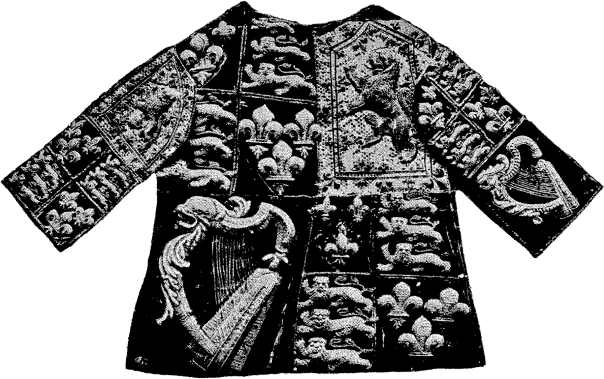 |
| FIG. 14.--The velvet tabard of Sir William Dugdale, Garter King of Arms from 26th April 1677 to 10th February 1686. |
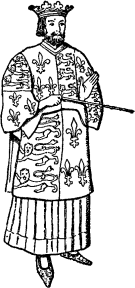 |
| FIG. 15.--William Bruges, the first Garter King of Arms, appointed 5th January 1420. (From an illuminated MS. in the Museum at Oxford.) |
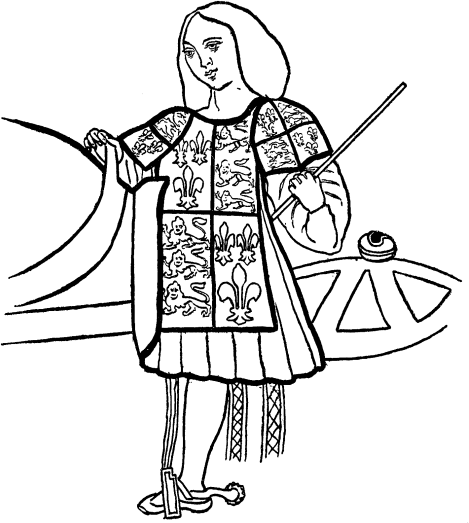 |
| FIG. 16.--A Herald. (Temp. Hen. VIII.) |
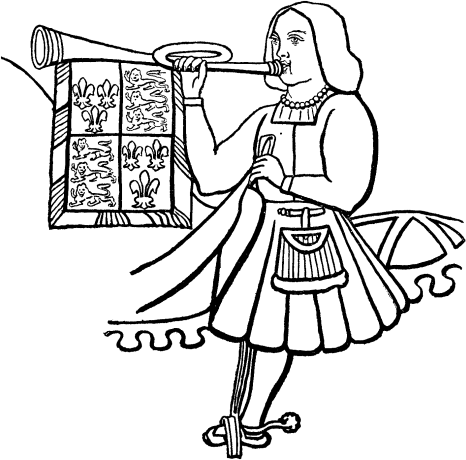 |
| FIG. 17.--A State Trumpeter. (Temp. Hen. VIII.) |
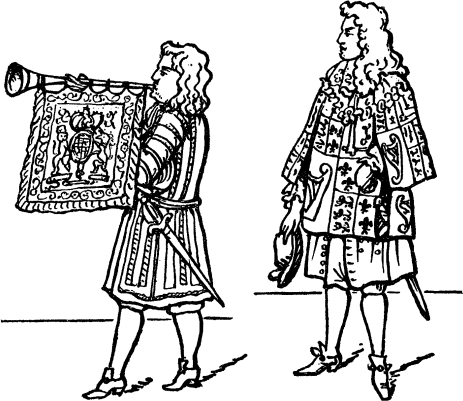 |
| FIG. 18.--A State Trumpeter and a Herald at the coronation of James I. |
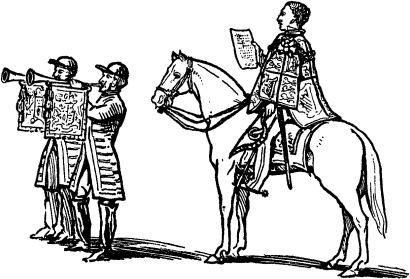 |
| FIG. 19.--Peace proclaimed at the Royal Exchange after the Crimean War. |
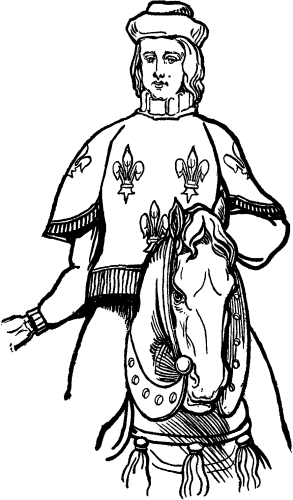 |
| FIG. 20.--A French Herald of the early part of the fifteenth century. |

 remarks that this is one of the few pieces of British official regalia which is still adorned with the ancient ensigns of France. But knowing how strictly all official regalia in England is required to have the armorial devices thereupon changed, as the Royal arms and badges change, there can be very little doubt that the appearance of the fleur-de-lis in this case is due to an oversight. The baton happens to be that of a former Lyon King of Arms, which really should long since have been discarded and a new one substituted. Two batons are usually placed in saltire behind the arms of Lyon King of Arms.
remarks that this is one of the few pieces of British official regalia which is still adorned with the ancient ensigns of France. But knowing how strictly all official regalia in England is required to have the armorial devices thereupon changed, as the Royal arms and badges change, there can be very little doubt that the appearance of the fleur-de-lis in this case is due to an oversight. The baton happens to be that of a former Lyon King of Arms, which really should long since have been discarded and a new one substituted. Two batons are usually placed in saltire behind the arms of Lyon King of Arms.